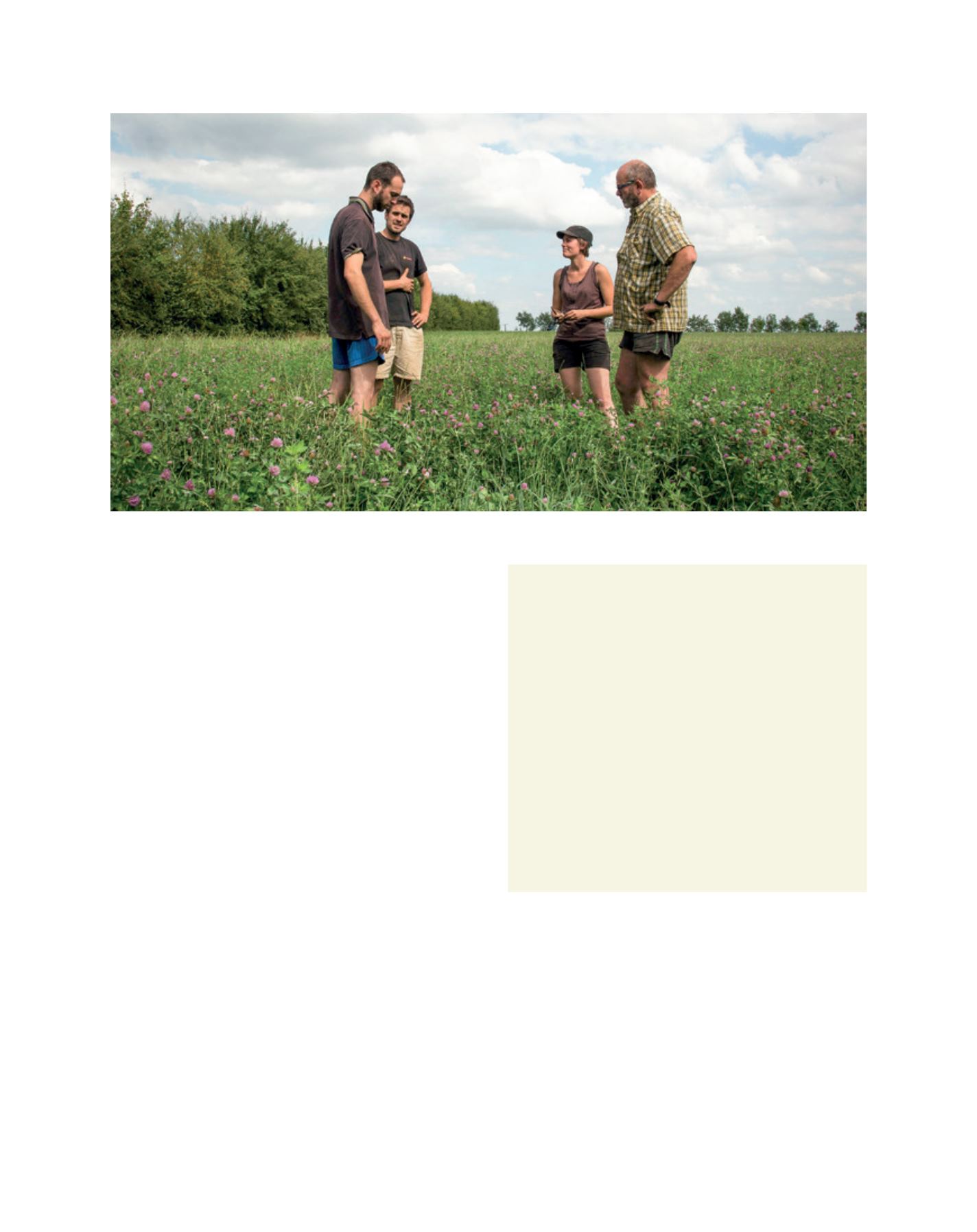

France’s land policy has allowed family farmers to invest in soil fertility and concentrate on productive land management
Image: Xavier Remongin/Min.Agri.Fr
[
] 89
development), echoing the developments of society. During
the last reform of the CAP, a special effort was made for
small and medium farmers to encourage more productivity
and drive the involvement of youth.
In France, the structural policy is aimed at modernizing
family farms and limiting the development of large farms.
Thus, land use and forestry and rural development instruments
were created and several measures have been implemented:
long-term, tacitly renewable leases, control of land allocation
to regulate the size of farms, regulation of rent prices and
strong, secure access to land. This land policy has allowed
family farmers to invest in soil fertility, limiting investment
in the earth to concentrate on productive land management
and the promotion of generational change.
Politically, professional agricultural organizations are
involved in decisions and the implementation of agricultural
policies. On the economic front, the establishment of inter
helped improve the organizational capacity of the agricultural
sector and tools for the empowerment of farmers have been
put in place, such as the recognition of producer organizations
or written development contracts. These national guidelines
are now widely adopted in Europe.
Recognizing the richness and diversity of terroirs, France
established a policy of quality and origin almost a century ago,
to strengthen the competitiveness of its predominantly family
farms. This policy, based on the link between produce and its
source, and its superior environmental quality, is now shared
at European level and represents an important lever for the
use and development of our territories.
Under the leadership of Stéphane Le Foll, France has
engaged in a two-year programme for the agroecological
transition of its agriculture. This will favour solutions that
combine economic, environmental and social performance
by promoting a systems approach to operations (global
thinking, simultaneously integrating all aspects of the opera-
tion). There is no ready recipe, but a need to develop specific
solutions in each context. Agroecology is based in particu-
lar on the development of positive biological interactions
within the agroecosystem, promoting functional biodiversity
for example, with rotations adapted to reduce dependence
on inputs. It aims to strengthen the family farmer in his or
her economic, social and environmental role, and make the
farmer a key player in sustainable agriculture. Family farming
is flexible, adaptable and innovative, therefore it is best suited
to be the spearhead of France’s agroecological project.
French agriculture in figures
The face of French agriculture today:
• 500,000 farms with an average size of 55 hectares and
966,000 permanent assets
• Agricultural production doubled in 50 years, to
€
66 billion in 2010
• Farmers are better trained, and 34 per cent are from higher
education
• Agriculture employs more than 1 million people, and over 25
per cent are women
• The food industry is the second-largest industrial employer
• 25 per cent of farms have at least one production under a sign
of official quality.
In 50 years, the total volume of French agricultural production has
doubled, meeting the demographic challenge and participating in major
global food balances. Food quality meets the standards expected by
consumers. The number of farms has fallen by four in less than 50 years,
leading to professionalization and significant improvement in economic
performance. These farms are mainly family farms, often focused on
diversification and a strong local presence rather than corporate formats.
D
eep
R
oots
















